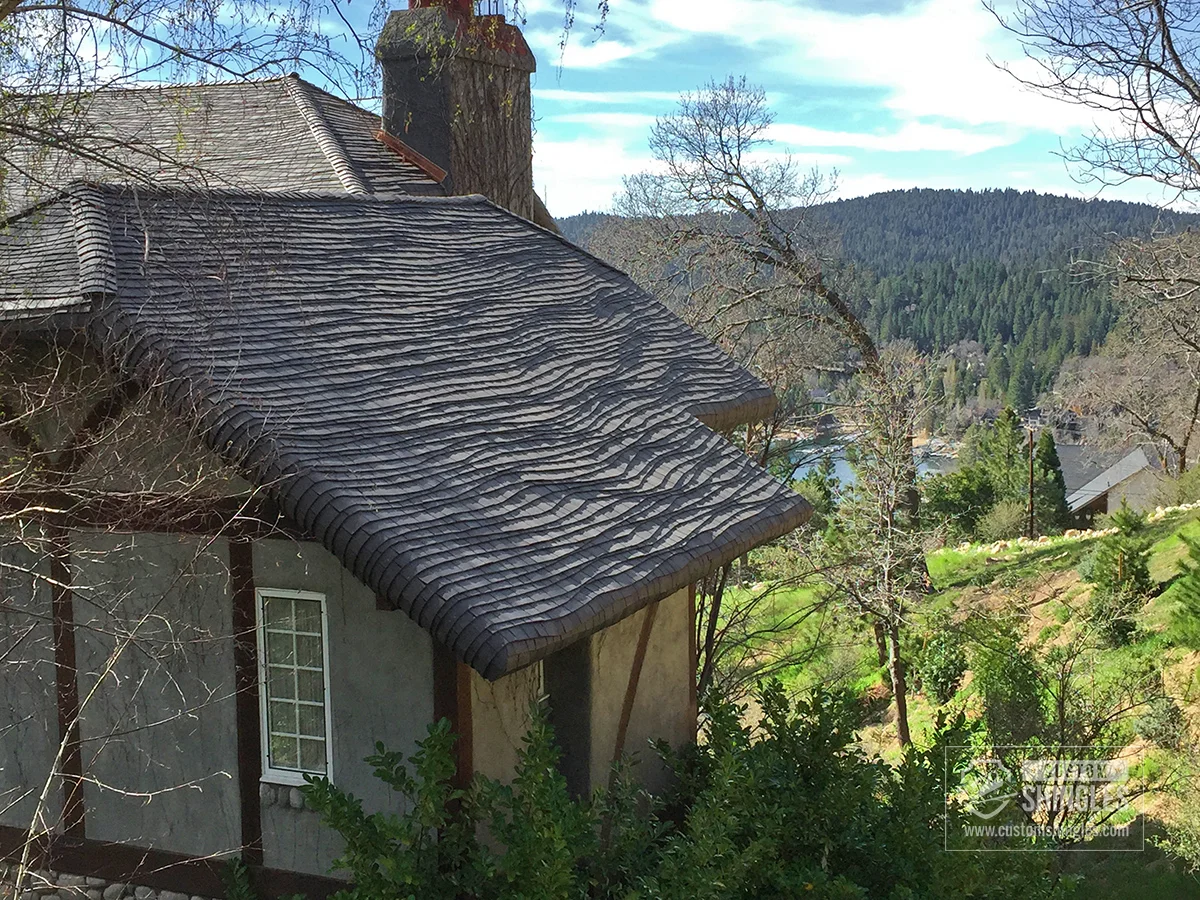Images © 2006-2025 Custom Shingles
Composite and Synthetic Wood Shingles
For centuries, people across America have used natural wood products as roof treatments. Some architectural styles, like Colonial and Nantucket, wouldn’t be the same without their distinctive wooden shakes and shingles. That classic silver-gray weathered look comes from proudly perching in the elements for years. Unfortunately, there are some situations that are prohibitive to having true natural wood shingles
Although wood shingles are beautiful, long-lasting, and have a time-tested durability against weather and the elements, they are vulnerable to fire and some extreme weather.
Fortunately, synthetic composite shingles offer an alternative roof product that looks identical to wood, while being more resistant to fire, rotting, and insects.
What Are Composite Roof Shingles?
Composite shingle roofing is a synthetic product. The manufacturing process uses a variety of chemical approaches in producing simulated cedar shakes and shingles nearly indistinguishable from what nature’s forests supplies. Composite roofing shingles are also called synthetic shakes and shingles, or faux wood.
These sustainable roofs have every architectural advantage real wood offers, including offering excellent long-term performance, weather resistance and return on investment. Today’s composite roof shingles are lightweight, easy to install and stand out just as impressively as any natural wood product does.
Many people build high-end luxury homes with polymer-based roofing shingle — a durable, high-strength, lightweight and all-around stylish option. They’re easy to work with, look great, and offer resistance to weather factors.
“After exhausting all of my options to find a qualified local contractor, I contacted Custom Shingles out of Florida. Not only were they extremely professional, they organized a crew in a timely manner, researched and tested a new composite product to create the storybook look, and worked very efficiently to create an amazing new wave-style roof for our mountain cottage. Our neighbors have all complimented the final result.”
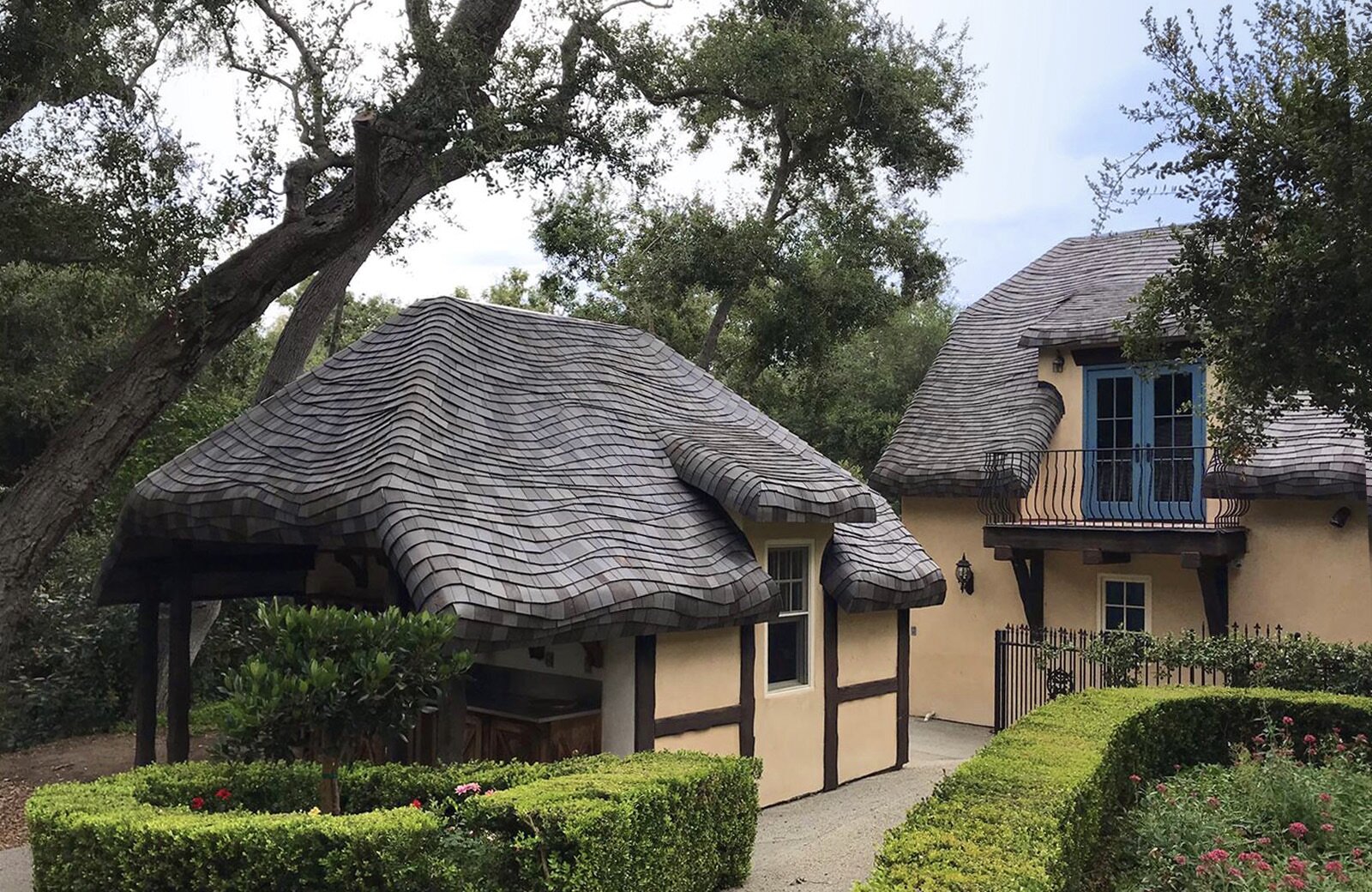
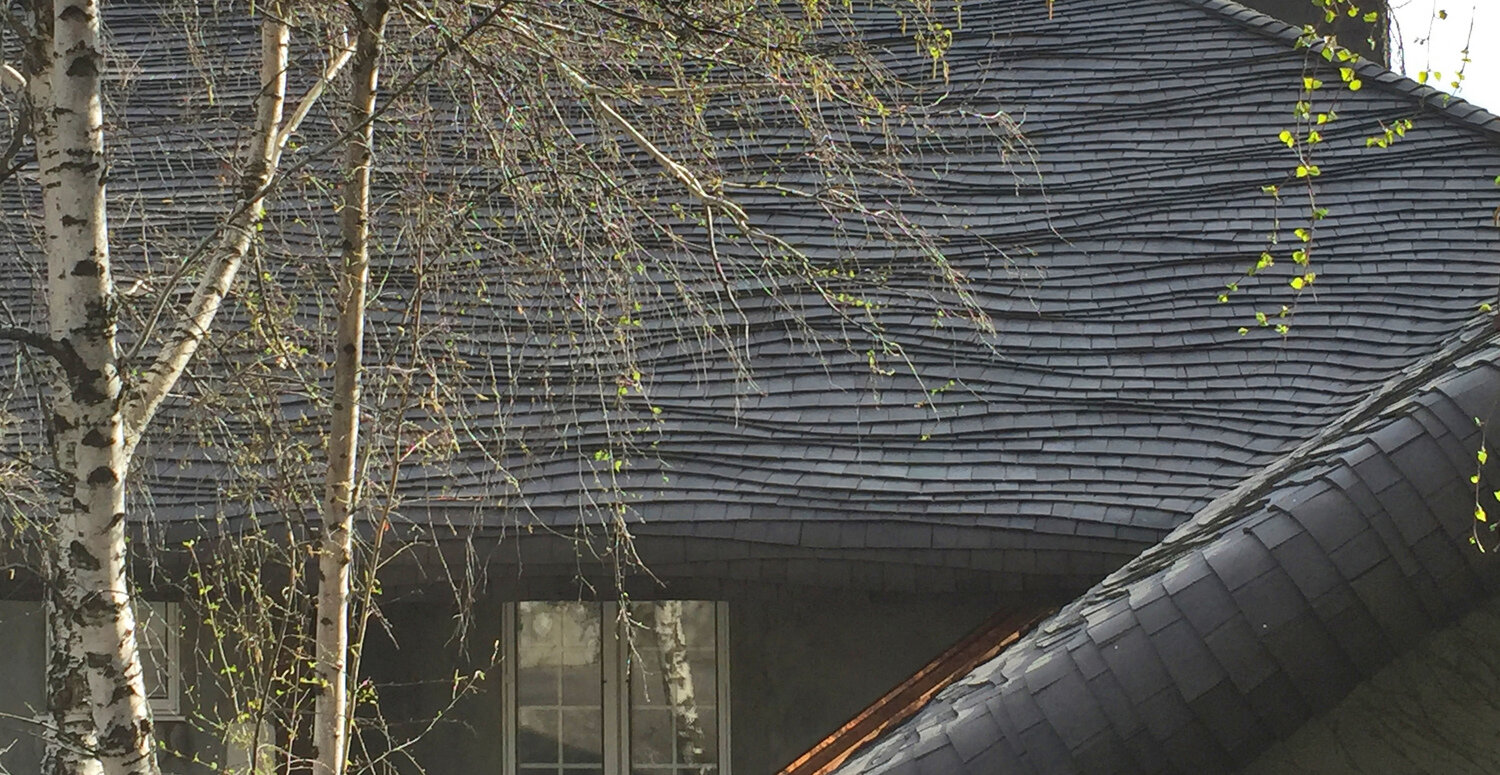
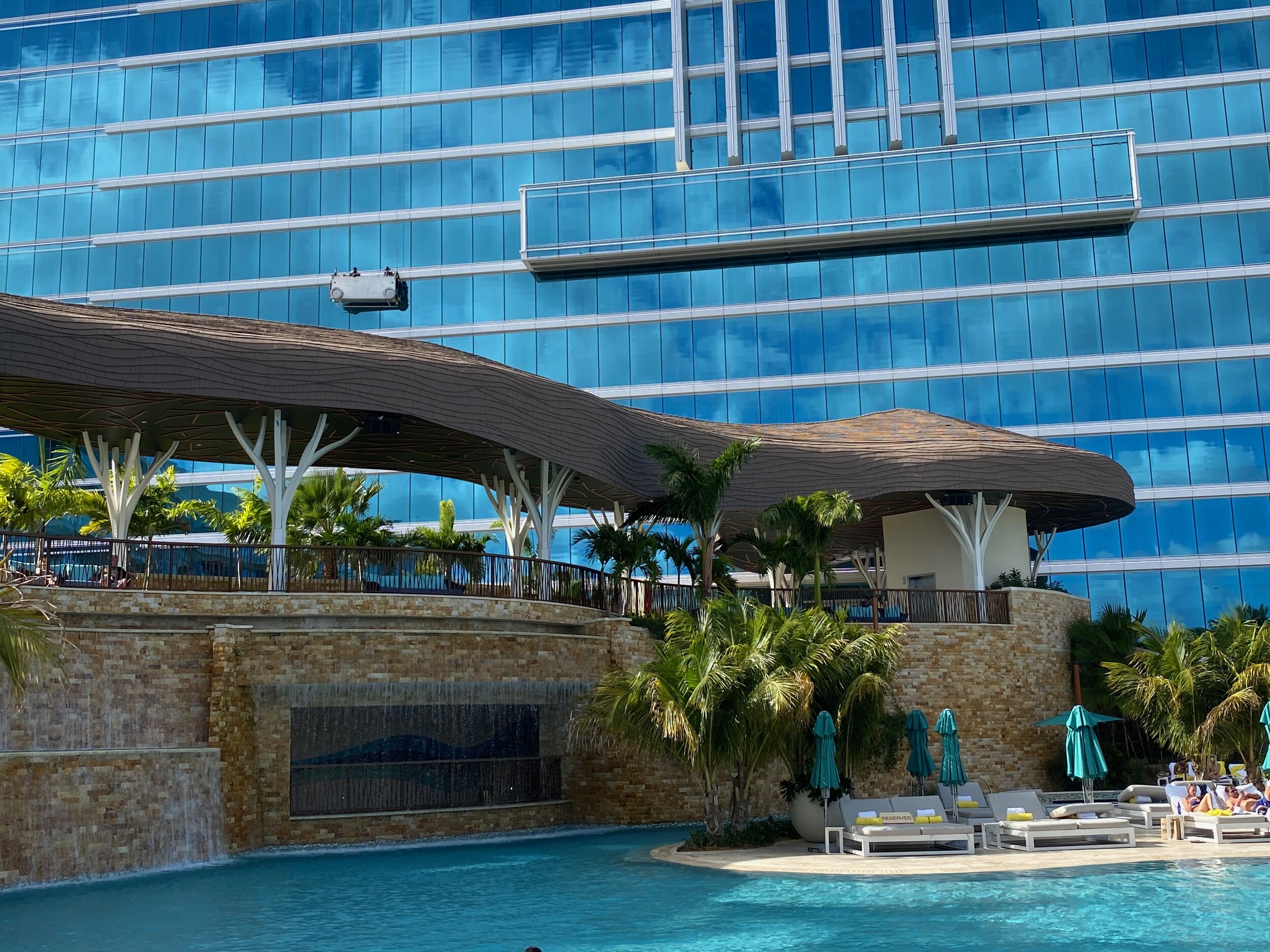

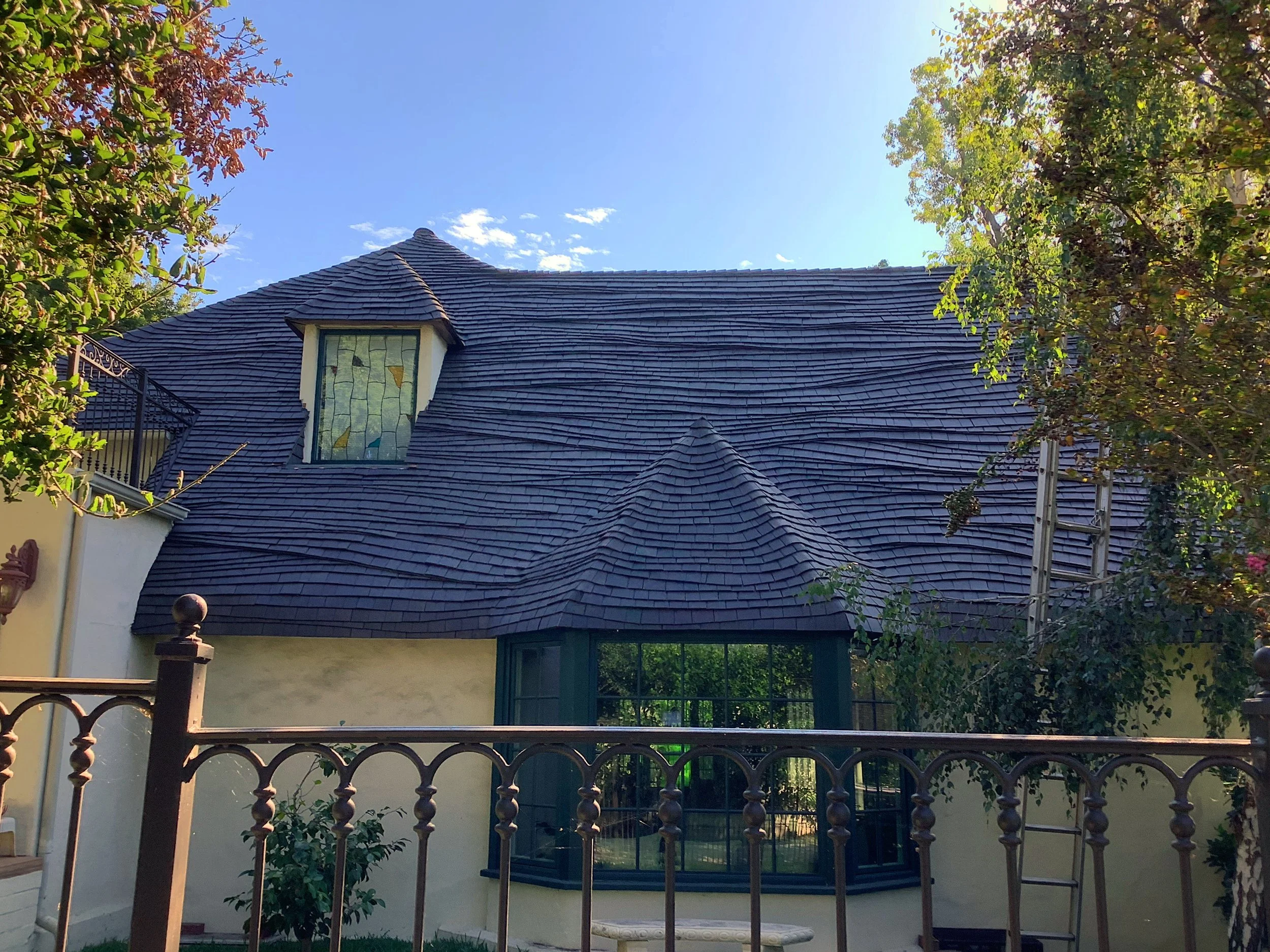
What Are the Benefits of Composite Wood Shingles?
The list of benefits of composite roofing is long, and the pros of having a composite shingle roof far outweigh the cons. Here are just a few of the benefits that come with using polymer composite wood shingles.
1. Long Life Spans of Wood Tile Shingles
Wood roofs have remained popular throughout the ages in part because of their resilience through all kinds of weather. However, moisture can breed mold and mildew on wood. Therefore, in areas that are subject to high levels of precipitation, it is crucial to have shingles treated for mold and mildew resistance. Composite shingles are fully resistant to these twin plagues.
Composite products, even those exposed directly to the full forces of the elements, can last more than 50 years. As time progresses and technology improves, we may learn they can last even longer than that.
2. Excellent Cost Returns on Composite Wood Shingles
A superior return on investment far outweighs the initial expense of materials and installation labor. This factor is especially important for high-end dwellings the occupants intend to be their last home, since they will hand it down to future generations. Commercial buildings with massive roof exposures also benefit from long-term savings.
3. Low Maintenance of Composition Wood Shingles
These polymer products require virtually no maintenance for their entire lifetime. There is no need to treat composite materials with a preservative or a periodic power-washing. Polymer roofs don't have granules like fiberglass or asphalt shingles, meaning no residual grit washes off and clogs gutters. Composite roofs are less likely to warp, split, chip or twist than wood, and rarely need to be replaced on an individual shingle-by-shingle basis. All these factors combine to make composite roofing an extremely low-maintenance option.
4. Resistance to Mold, Mildew and Rot for Composite Wood Shingles
Wood is one of the longest-lasting and most durable roofing materials on the market. Cedar and teak shingles are two examples of water-resistant roofing products that defend against the elements for a long time. As long as they’re allowed to breathe and have a drying cycle, they will hold up well against the elements. Still, wood roofing should be treated for rain resistance to ensure the longest possible life. By contrast, composite roofs are designed to be completely water-resistant.
5. Durability of Roof Composite Shingles
Roofing materials must be able to take every abuse nature hurls at them. Roofs deal with driving winds, heavy snow, hail, ice, heat and high humidity. Temperature changes can impact roofing products. A freeze-thaw cycle can be hard on wood and other organic materials.
On the other hand, weather is less of an issue with composites. Because polymer products are inorganic and inert, they are resistant to climate forces. Polymers generally retain their shape and last for many decades. Unlike organics, composites rarely expand or contract.
6. Lightweight Material for Composite Tiles
Because they’re so lightweight, composite roof shingles are much easier to structurally support than heavier products like slate, ceramic or concrete tiles. That extra support comes in the form of trusses, rafters and roof sheathing that cost money in both labor and materials. Composite roofs are lighter than other roofing options, and this amounts to lighter construction needs and less weight transfer to the ground. Lightweight roofing is highly critical, especially in heavy snow areas where large snowfalls put massive strains on all roofs.
7. Fire Resistance of Composite Roof Tile
Many areas have building and fire-code restrictions that prohibit the use of wood roofs. In certain locations where fire risks are high, wood wall shingles have even been banned from use as sidings. However, these issues don't apply to composite wood shingles. Most polymers are fire-rated as Class A or Class C.
These ratings satisfy the more stringent fire-safety laws, as polymer products are nearly impossible to burn without incredibly high heats. For this reason, polymer products are a great alternative in areas that are most prone to fire risks. With composite roofing, a house maintains a natural all-wood look and also provides maximum safety to inhabitants and surrounding structures.
8. Weather Impacts on Composite Wood Shingles
Weather impacts are always a threat to roofs. This can include anything from heavy hailstorms to fallen tree branches and more. Accidents like these are notorious for destroying ordinary roofs, often sending heavy objects straight through the roof.
Large impacts from objects such as tree branches can be easy to predict, but they can also be as tiny and seemingly innocent as golf balls. For this reason, many homes built in golf course communities protect themselves with composite wood shingles. Did you know some composite shingle manufacturers even use golf balls to test how well their products hold up against these impacts?
Request More Information
Got a question? Send us an email, using the form below, or call our office at 386-487-1015 (local) or 877-323-3553 (toll-free)
9. Color Selection and Retention of Composite Shingles for Your Roof
Today’s composite roofs retain their original color indefinitely. They don’t fade, streak or bleach in the sun. No matter where composite shingles are or what elements they face, these manufactured products stay looking new. Composite products are also available in a wide selection of color choices. They can mimic the look of raw, new cedar or display the silvery shade of weathered shakes.
10. Easy Installation of Composite Shingles That Look Like Shakes
Most composite roof product installations have the same methods and tools as conventional wood shakes and shingles. Wood shingles can be installed by licensed custom roofers, and the process can take advantage of their installation expertise.
11. Environmental Sustainability of Composite Shake Roofs
The majority of composite material comes from recycled plastics that would have ended in the landfill or, even worse, lakes or oceans. This helps decrease the amount of pollution in the ocean or other places. As such, composite shingles make good use of material that would otherwise go to waste. Nonetheless, organic wood shingles are made from a natural product, and therefore require no synthetic processes during the manufacturing stage.
Composite Wood Shingles Appear Exactly Like Natural Roofing Products
Adding to the obvious benefits high-end homeowners, architects and builders receive from polymer composite wood shakes and shingles is their incredible appearance. Most people can’t even tell the difference between a modern polymer composite roof and real wood.
Advanced manufacturing processes take a computerized 3D image of what product they’re copying and then produce exact molds where liquid polymers are cast and set. Combined with specialized colorings and minute details like wood grain patterns, these liquid-injected castings are perfect replicas of nature’s original design.
High-quality composite shingles even show slight imperfections naturally found in wood. Special attention ensures slight shading differences exist between lots or batches. This trick allows field installers to randomly set each manufactured shingle in place, giving the natural color and texture variation found in raw shake and shingle bundles.
Variations in Appearances of Composition Wood Shingles for Your Roof
The best manufacturers offer dozens of different composite wood shingle profiles:
Many owners and builders prefer the rustic look of thick, hand-split shakes. This appearance is easy to produce in composites.
Some like the smooth and even appearance of sawn wood shingles. Manufacturers cast perfect resemblances that include swirls from the saw machinery.
Other discerning purchasers want the elegance and old-world charm of slate shingles. That’s available in composites, too, and without the massive weight and cost of natural slate.
Possibly the only drawback to composite roof shingles is the huge range of selection. Some products and manufacturers lead others in selection and quality, so costs vary accordingly. A professional roofing company that specializes in high-end roofing solutions can help with this decision. Roofing companies that deal with heritage restoration and top luxury homes know their products and applications. They’re in the business to be intimately familiar with all products, including polymer composites.
Choose Custom Shingles for Your Composite Wood Roof Installation
Synthetic composite roofs offer a flexible and durable alternative to wood shingles for those who love the look of wood but prefer the protection of composite shingles.
Custom Shingles has more than 40 years’ experience in providing premier decorative wood shingles. As roofing installation experts, we highly endorse quality-made and installed organic and composite wood shingles. We'll provide you with information about your best product selection. We'll also assist with your design and installation to make your roof beautiful.
At Custom Shingles, we've accomplished some difficult and stunning projects, many of which have been featured in Better Homes and Gardens, Country Living, Veranda and even Vogue. We’ve always done high-end custom work like steaming and bending wood products. Now we can do custom work with composite shingles.
Contact us today for more information or to request a quote.
Ready to find out what we can do for you? Give us a call to speak with a representative today.

